Cucurbita pepo ‘Delicata’
There’s a lot of different types of squash out there, from tiny little pattypans to massive pumpkins, and all of them have slightly different colors, flavors, and textures from one another.
So you’d think with all the variety out there, it would be hard to narrow down just a handful of favorites.
But not for me. No question, I could happily live the rest of my life with a garden full of just ‘Delicata’ and maybe some Hokkaido.
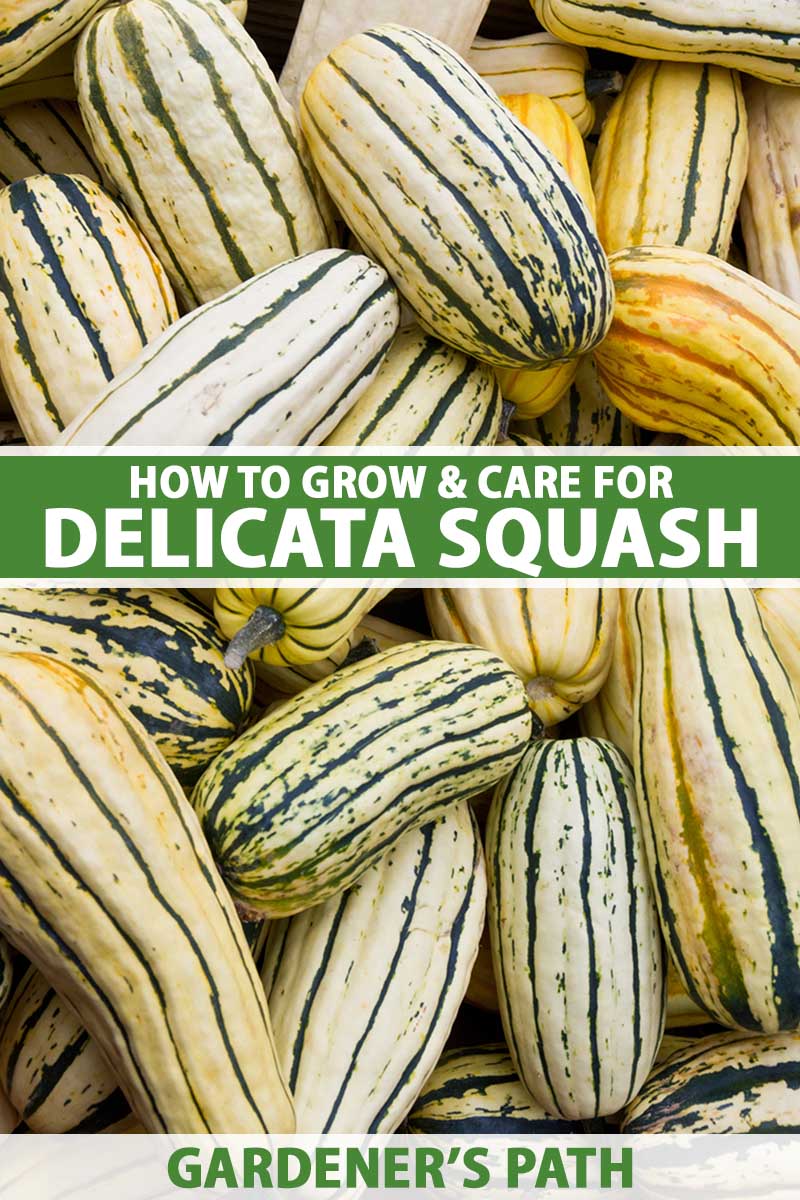
We link to vendors to help you find relevant products. If you buy from one of our links, we may earn a commission.
It’s all right there in the name: “Delicata” perfectly evokes the tender, airy texture of the flesh of these squash.
But that’s not what they’re named for. It’s the tender rind of this plant that sets it apart.
You don’t have to painstakingly scrape and cut away the skin of this squash. It’s perfectly soft and edible, and adds flavor that skinless winter squash lacks.
Think of the skin like that of young zucchini. Tender and flavorful. Inside, the flesh is nutty, sweet, and creamy.
It’s no more difficult to grow than any other variety of winter squash and we’ll help you succeed.
Before you know it, you’ll be smothered in tender, tasty squash. Before that can happen, we need to go over the following:
What You’ll Learn
What Is Delicata Squash?
‘Delicata’ squash is a winter type, and winter types are usually characterized by tough, thick skin.
Pumpkin, kabocha, acorn, and spaghetti are all common examples of winter varieties. They all have thick skin that makes them last a good, long time in storage.
And that’s where the name “winter” comes from – you can enjoy them during the winter when the growing season is over, whereas summer squash needs to be eaten relatively soon after harvesting in the summer or fall.
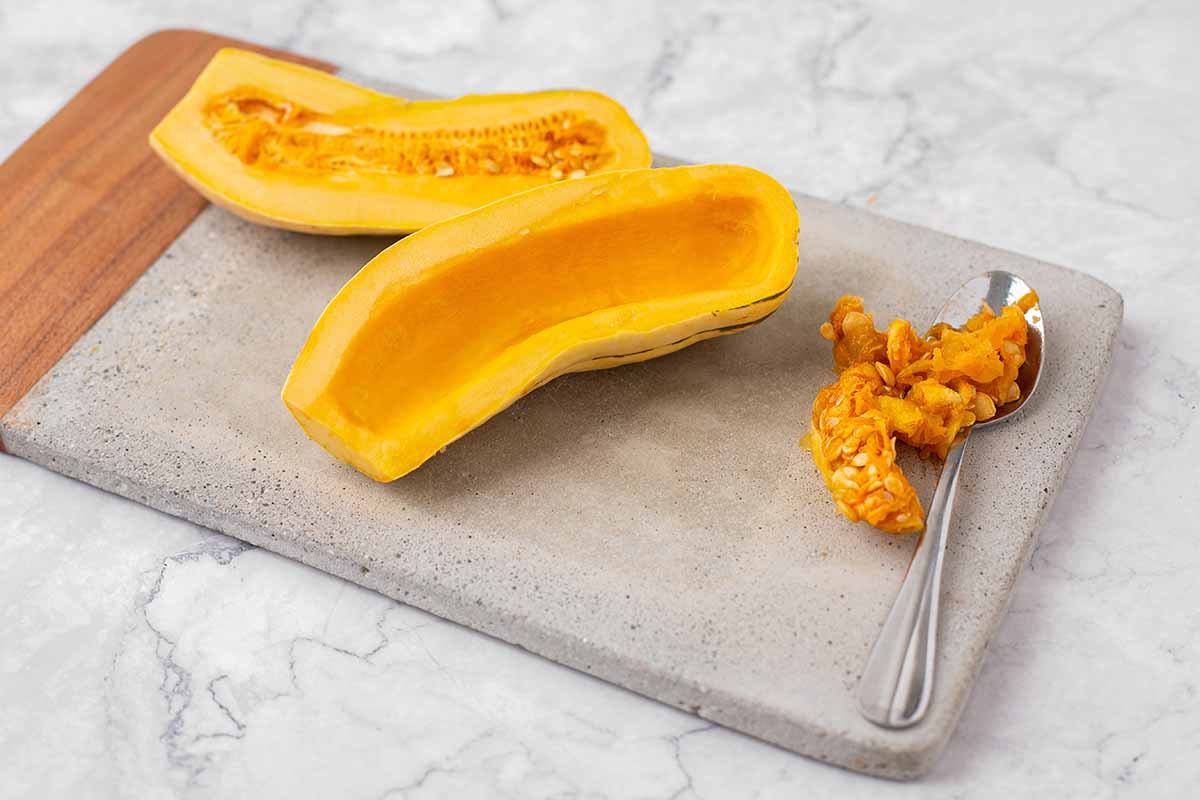
The downside of winter squash is that you have to remove that thick skin to enjoy the sweet flesh, and it can be a real challenge sometimes. I literally have scars from skinning pumpkins and Hubbards.
If you’ve ever stood over the sink painstakingly peeling an acorn squash until your fingers ached, you know what a pain that can be. Plus, you miss out on the flavor that the skin could offer.
‘Delicata,’ on the other hand, is a winter type with thin, delicate skin that adds flavor.
Many of the most popular types of both winter and summer squash come from the native North and South American species Cucurbita pepo, like pattypans, crooknecks, zucchini, pumpkins, and of course, the cultivar called ‘Delicata.’
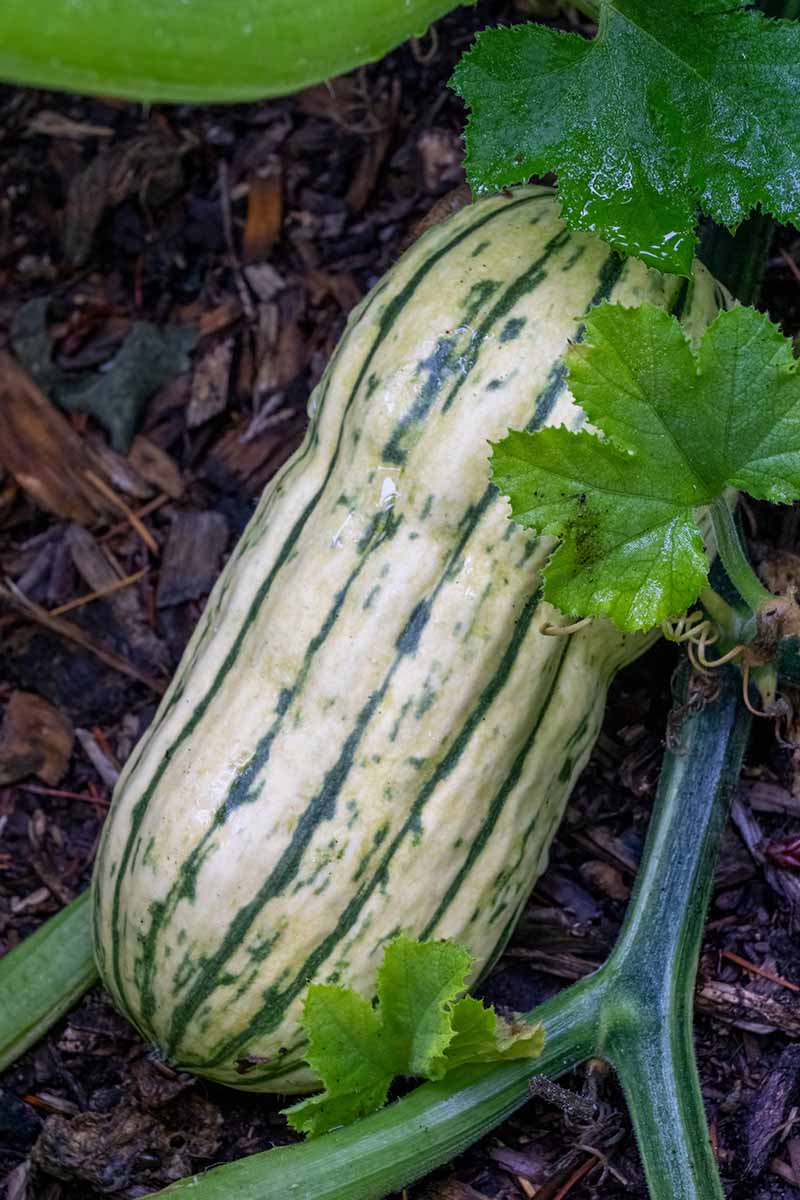
Even though it’s classified as a winter type, it doesn’t store as long as some hard-rinded kinds.
It’s somewhere in between zucchini and spaghetti in terms of storage. It can last a month or two in storage, but it won’t last from fall until spring like some can.
The thin skin actually has many people arguing that it should be classified as a summer type. For now, it lives on the winter side of things.
There are plants with both bush and vining growth habits and all of the fruits are an elongated oval shape with cream or yellow skin that has orange or green stripes.
Cultivation and History
‘Delicata’ was bred and first introduced in 1894 by the Peter Henderson Company of New York, a gardening company started by horticulturalists Peter Henderson and James Henderson, using squash that had been cultivated for decades before.
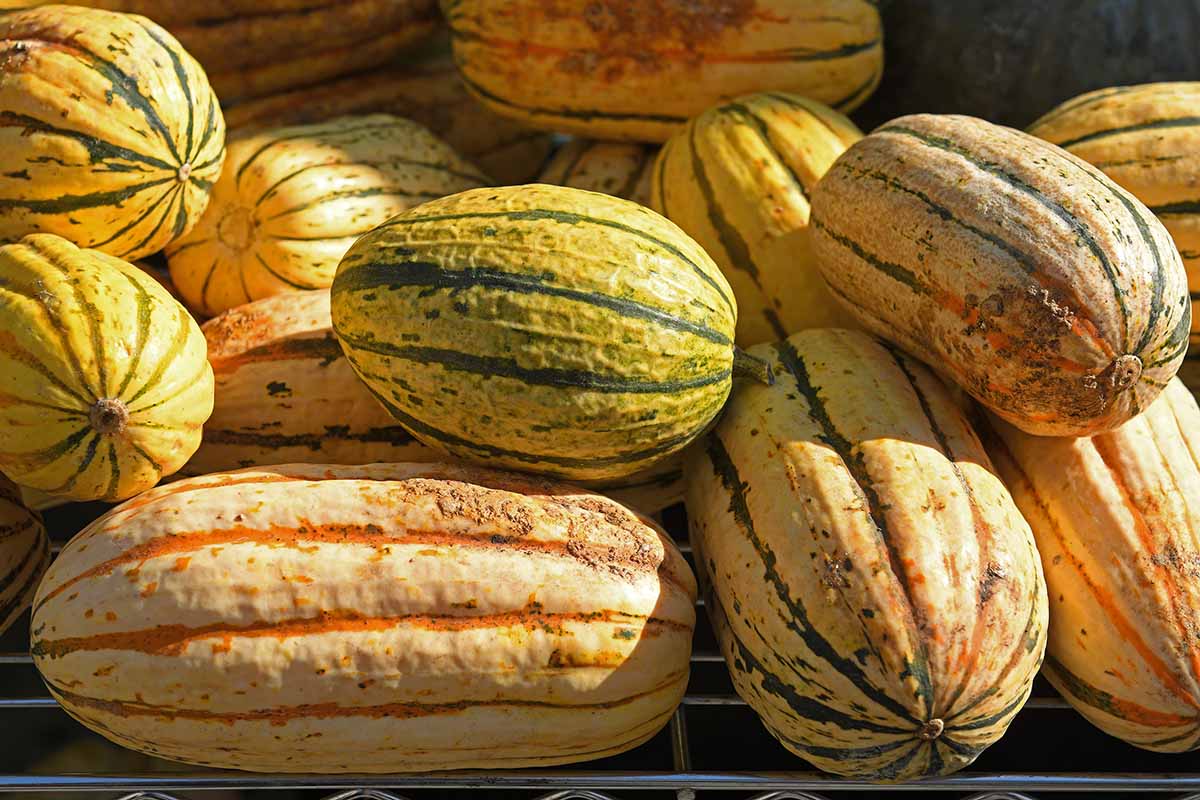
It was an immediate success, but a one-two-three hit of the Great Depression, low yields, and its inability to withstand some of the most common fungal squash diseases saw its popularity drop dramatically.
For decades, people missed out on the sweet squashy treat until a Cornell professor named Henry Munger picked up a ‘Delicata’ at a P&C grocery store in Ithaca’s East Hill Plaza in the 1980s.
He took it to the university and used it in their breeding program.
Eventually, plant geneticist and Professor of Agronomy Molly Jahn and Professor of Plant Breeding George Moriarty at Cornell crossbred the offspring from this squash with acorn types, which are more disease resistant, to come up with ‘Cornell’s Bush Delicata.’
This new variety was high yielding and resisted fungal diseases, with a handy compact, bushy growth habit.
Thus was reborn the ‘Delicata’ cultivar that we know and love today.
Delicata Squash Propagation
‘Delicata’ can be propagated in two ways. You can either save seeds from existing squash or buy seeds for sowing, or you can buy a seedling.
Plants should be spaced about five feet apart, depending on the cultivar. Don’t crowd them – crowding is a fast track to diseases.
From Seed
Sowing ‘Delicata’ seeds isn’t much different from what you would do with any other kind of winter squash.
These plants need rich, well-draining, loamy, loose soil. The right pH is somewhere between 6.0 and 6.8, but these plants can tolerate soil slightly outside of that range.
Since the plants need up to 100 days to mature, you need to decide if you have the right climate to start them outdoors or indoors.
Since they do best with temperatures above 70°F, those with cool, short growing seasons should definitely start their seeds in the spring.
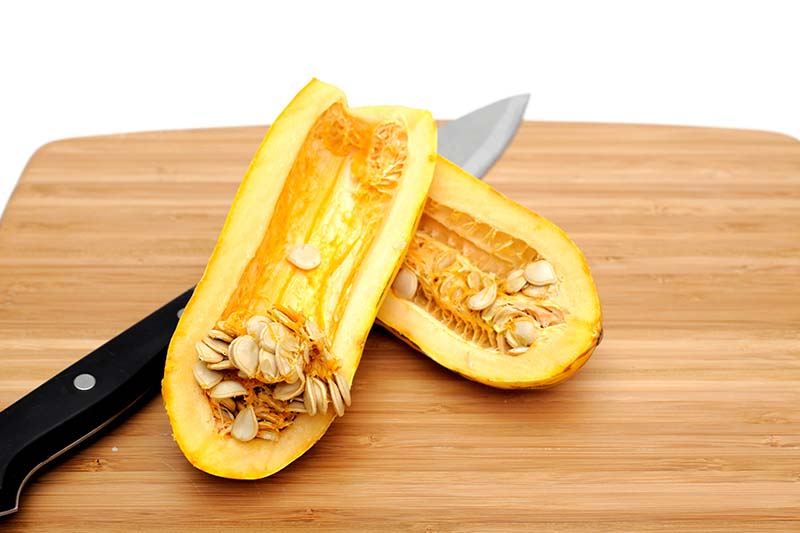
Look at your local climate calendar and determine when temperatures are predicted to be above 70°F during the day.
Then, count back about four weeks. That’s when you should start your seeds. Or, for direct sowing, that’s when you should put them in the ground outside.
To start seeds indoors, pick up a few three-inch pots and fill them with potting soil.
I always use biodegradable CowPots because they’re made from a renewable resource and they reduce the stress of transplanting for seedlings, which should lower your stress as well!
Plant the seeds an inch deep in the pot or ground and water well to moisten the soil enough that it feels like a well-wrung-out sponge.
If you’re using pots, they should be placed somewhere bright and sunny indoors on a seed heating mat. A west-facing window with no trees or fences blocking the way is perfect.
Since that’s hard to find, you’ll probably need to use supplemental lighting. Seedlings need eight hours of sun per day or you’ll be looking at slow, leggy growth.
I usually find my plants do better if I direct-sow them or if I use CowPots. Transplanting seems to bother them.
From Seedlings
Plant in the spring when you have 80 to 100 days with temperatures above freezing ahead of you, for the plants to mature.
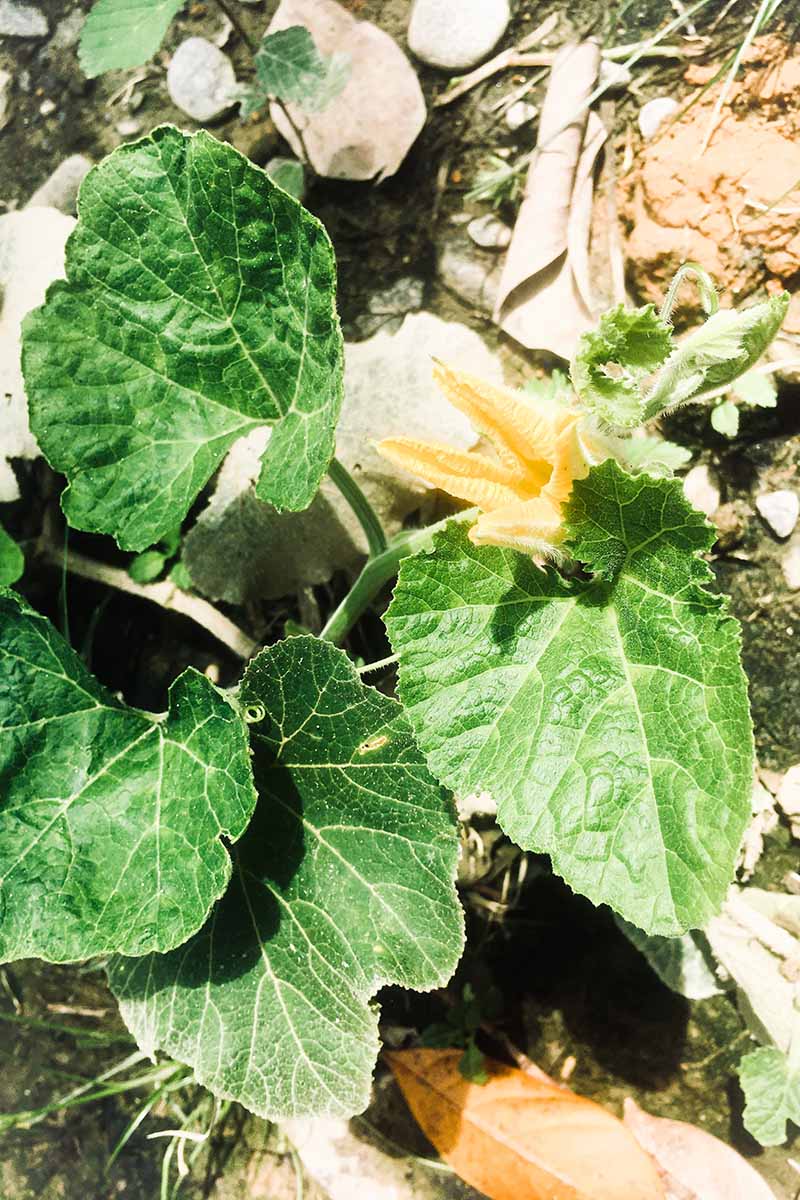
If you don’t have that much time, you should opt to start seeds indoors at least a month in advance of the last frost date.
You can also squeeze in a few extra weeks by covering plants in frost cloth and planting slightly before the last predicted frost date.
To plant seedlings, prep your garden area, raised bed, or container, which needs to hold at least seven gallons. Containers should be filled with potting soil, and garden soil needs to be rich, loose, and loamy. It must also be well-draining, with a pH between 6.0 and 6.8.
If you need to improve your native soil, work in lots of well-rotted compost. It works wonders, loosening up clay and enriching sand.
Next, dig a hole that is twice as wide as the container that the plant came in. Gently remove the seedling from the container if it’s not biodegradable and place it in the hole. Shore up around it with soil and water well.
How to Grow Delicata Squash Plants
These plants need full sun. Don’t skimp and try to get by with a partially shady spot. You’ll just be inviting fungal issues and stunted growth.
If you can’t provide full sun, you’re better off planting in a container somewhere that does receive full sun.
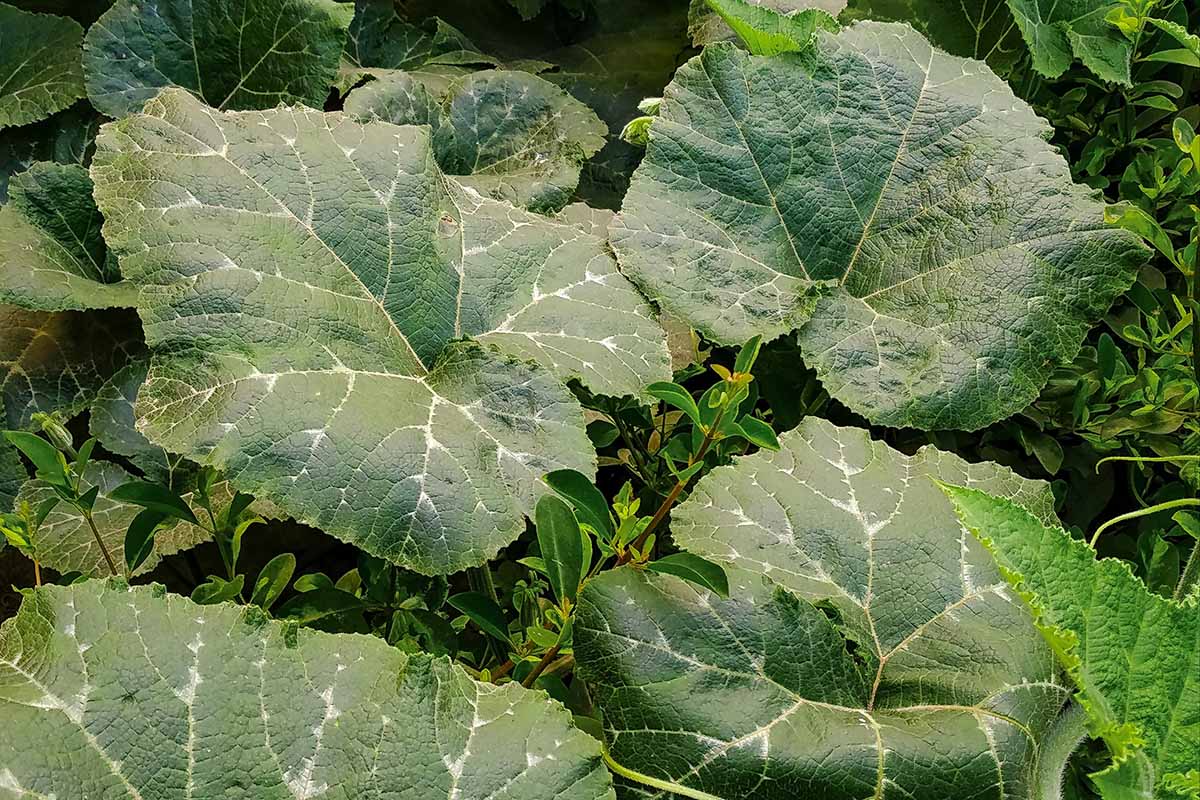
Keep the soil moist. This can be a challenge in the heat of summer, so some organic mulch can go a long way toward helping you keep the soil moist.
Speaking of, be sure you’re watering at the soil level and not the leaves. That can be hard to do since the leaves form a dense canopy, but make it happen. Squash plants are prone to fungal diseases, and those fungi just love lots of water.
If you have drip irrigation, all the better. I’ve never had happier squash than when I use drip irrigation to maintain regular moisture.
I never fertilize my ‘Delicata,’ but go for it if you want. Just be aware that over-fertilizing causes leaf growth at the expense of fruit development. Instead, I side-dress once a month with handfuls of well-rotted compost.
Be diligent about keeping weeds away. Not only do weeds steal nutrients, but they can harbor and spread disease.
Growing Tips
- Keep the soil moist.
- Plant in full sun.
- Side dress once a month with well-rotted compost.
Maintenance
Once your plant is in the ground and spreading away, there’s little you need to do.
Trim away any leaves or vines that are dead or damaged, using a clean pair of shears. Other than that, just keep up with the water and watch it grow.
Cultivars to Select
Most of the time, you’ll just find this plant listed as ‘Delicata,’ but there are a few lovely strains out there.
Grab 15 heirloom seeds from Burpee, if you’re interested.
Otherwise, check out these excellent options:
Cornell’s Bush
‘Cornell’s Bush Delicata’ is a tidy little plant that will only spread out to about six feet wide and the fruit is ready in just 80 days, which makes it one of the earliest ripening winter squashes out there.
As you might imagine, the fruits are a bit smaller than those of the parent cultivar, but they’re every bit as sweet.
This 2002 All-America Selections winner is powdery mildew resistant. Because of its impressive disease resistance and bushy growth habit, it has become the most popular strain out there. It’s also open-pollinated so you can save the seeds to use year after year.
It stores well, too. These can last for 100 days in a cool, dark spot.
It’s pretty impossible not to love this strain. Do you agree?
Grab some seeds for yourself at True Leaf Market. They carry four-gram, one-ounce, four-ounce, one-pound, five-pound, and 25-pound options.
Candystick
Ready in just 90 days, ‘Candystick’ has pleasing tan-orange skin and deep green stripes. It’s not just a pretty face, though.
Inside that tender skin is a rich, sweet, orange flesh. It’s so sweet that you don’t even need to drizzle on any maple syrup – it’s a natural dessert.
This open-pollinated strain was bred in Oregon by Carol Deppe, a Harvard-educated plant breeder and gardening book author who specializes in creating public-domain crops.
Deppe bred this beauty to have tiny seed cavities so you get more flesh per fruit than with some other strains.
Honey Boat
If you did one of those blind taste tests with this squash, you’d be pretty sure you were eating candy when you bit into this squash. It’s that sweet.
It was developed by Dr. James Baggett and his team at Oregon State University to be flavorful, early producing, and resistant to disease.
‘Honey Boat’ takes about 105 days to mature and has large seed cavities, which makes it ideal for stuffing.
Seeds in a variety of package sizes are available from High Mowing Organic Seeds and from Botanical Interests.
Jester
Jester is all dressed up like a court entertainer in striped bloomers. The midribs of the fruit are dark green while the flesh is pale ivory.
It’s ready in about 95 days, with medium-sized, egg-shaped fruits on a semi-vining plant.
Zeppelin
Plant breeder Frank Morton of Wild Garden Seed in Oregon bred this strain as an open-pollinated heirloom that improved on the parent cultivar to create a semi-vining, sturdy plant.
The large fruits are ready in 100 days and feature a showy yellow skin with deep green stripes.
Managing Pests and Disease
‘Delicata’ is disease-resistant, so you’re less likely to have to deal with the kind of problems that can plague other winter squashes.
One year, I had a few different squashes growing in my garden and all of them except the ‘Delicata’ struggled with powdery mildew. If you’ve faced powdery mildew in the past, plant the ‘Cornell Bush Delicata’ strain because it’s particularly resistant.
They aren’t immune to anthracnose, however.
This fungal disease is caused by Colletotrichum orbiculare and it thrives during hot, rainy periods. Causing yellow, water-soaked spots on the stems and leaves, the fungi can kill the fruit before it matures by causing sunken, rotten spots.
Crop rotation and buying certified disease-free seed will go a long way toward preventing this disease.
It can be challenging to treat, but if you catch it early and use a stellar product like Mycostop, you can get it under control enough to still have a big, healthy harvest.
I’m always singing the praises of Mycostop because it’s incredibly powerful and effective, plus it doesn’t harm the environment.
Buy some at Arbico Organics in a five- or 25-gram packet and keep it around just in case.
No cucurbit is immune to squash bugs, so read our guide for tips on how to spot and stop this pest. Keep an eye out for aphids, as well.
Harvesting Delicata Squash Fruit
Wait until the leaves of the plant start to turn yellow and the stem feels hard and dry before you harvest the fruits of your labor.
The rind should feel hard and the color should have turned to whatever mature colors your strain exhibits.
At that point, cut them away from the vine with a sharp pair of clippers. Leave about half an inch of stem attached to extend the storage life of the squash.
Preserving
‘Delicata’ squash can last for months if you store them in a cool, dark area with good air circulation.
You can also cube the flesh with the skin on into one-inch sections, boil until soft, and then pack into containers and freeze.
If you’re into pressure canning, you can pressure can winter squash. Or slice it thin after washing and dehydrate in an electric dehydrator or in your oven at the lowest setting.
Find more tips on dehydrating veggies here.
Recipes and Cooking Ideas
Oh ‘Delicata,’ how we love thee. Let me count the ways…

It’s perfectly marvelous roasted with butter or turned into a hash with some potatoes. Scrape out the middle and put your favorite topping inside and toss the whole thing in the oven.
I like breadcrumbs, butter, pistachios, and garlic, but add what you like.

If you make squash veggie patties, try it with unpeeled ‘Delicata.’ The skin adds a whole new layer of flavor and texture. Check out this recipe on our sister site, Foodal.
It’s also great roasted and allowed to cool and then tossed into a kale salad, or blended with your favorite ingredients into a soup.
The meatier texture of the skin makes slices or cubes of the flesh and skin a good substitute for meat in tacos as well.
Quick Reference Growing Guide
| Plant Type: | Annual vegetable | Water Needs: | Moderate |
| Native to: | South America | Maintenance: | Low |
| Hardiness (USDA Zone): | 3-9 | Tolerance: | Downy mildew, fusarium wilt, leaf spot, powdery mildew |
| Season: | Fall | Soil Type: | Loamy, rich, loose |
| Exposure: | Full sun | Soil pH: | 6.0-6.8 |
| Time to Maturity: | 80-100 days | Soil Drainage: | Well-draining |
| Spacing: | 5 feet | Companion Planting: | Borage, chives, corn, dill, marigolds, nasturtiums, peas, tomatoes |
| Planting Depth: | 1 inch (seeds), same depth as container (seedlings) | Avoid Planting With: | Brassicas, melons, potatoes |
| Height: | 18 inches | Family: | Cucurbitaceae |
| Spread: | 10 feet | Genus: | Cucurbita |
| Growth Rate: | Moderate | Species: | Pepo |
| Common Pests and Disease: | Aphids, squash bugs; Anthracnose | Cultivar: | Delicata |
Enjoy Your ‘Delicata,’ Skin and All
If it wasn’t clear already, I’m a huge fan of ‘Delicata’ squash. I remember the first time I tried it. I couldn’t get enough, and I didn’t even know it was so freakin’ easy to grow!
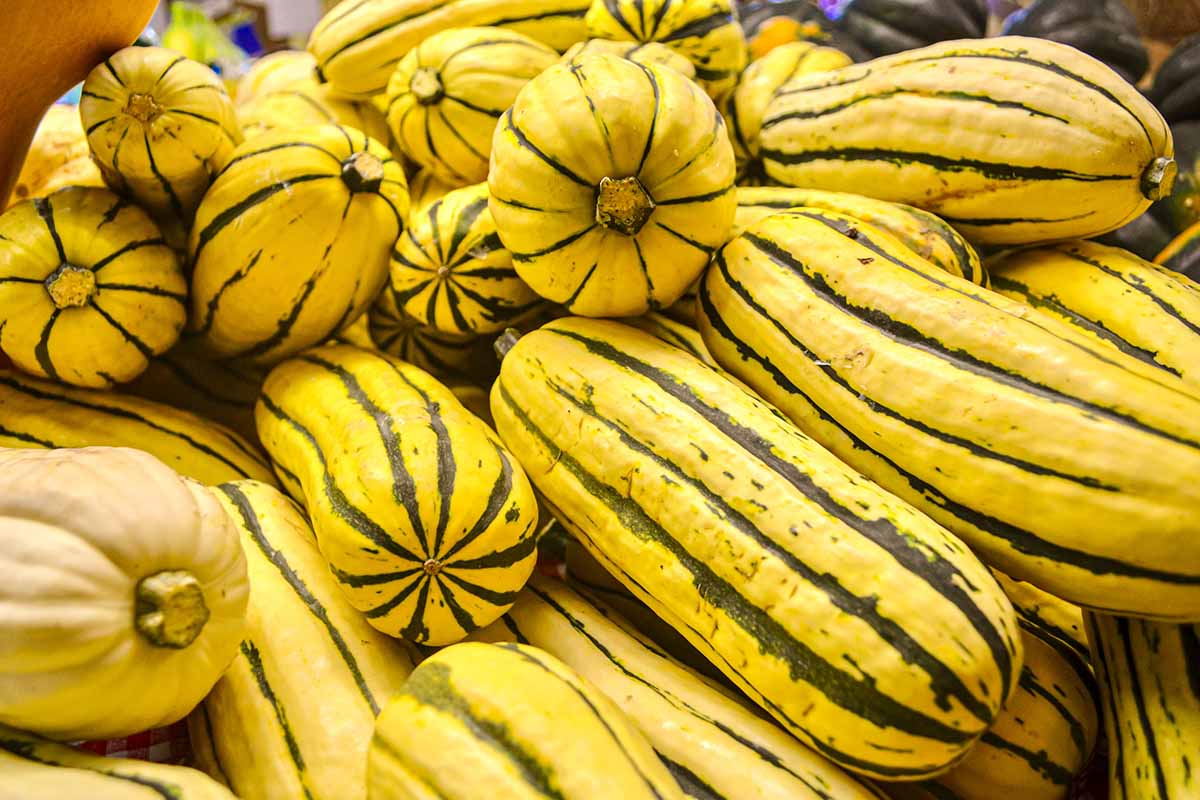
How do you intend to use your harvest? Share with us in the comments, since the biggest challenge of growing ‘Delicata’ is going to be using them all up!
Was this guide useful for you? I hope so. We have many other guides to help you on your cucurbit journey, so check these out next:
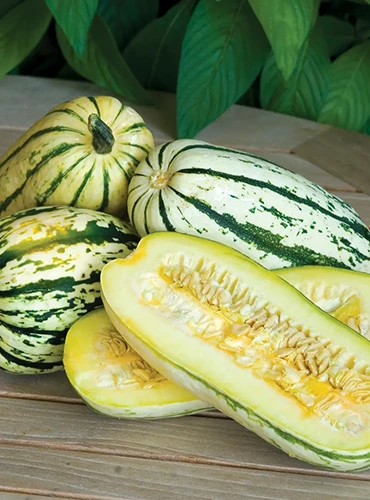
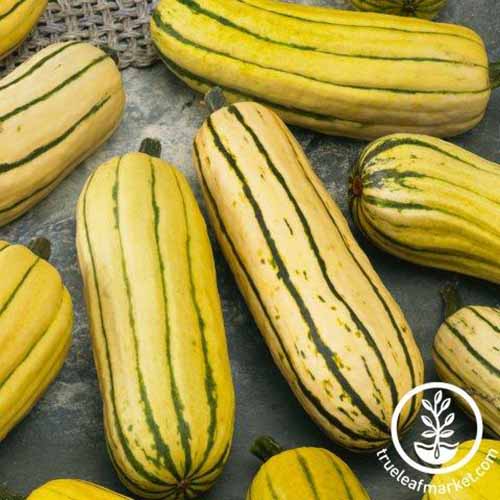

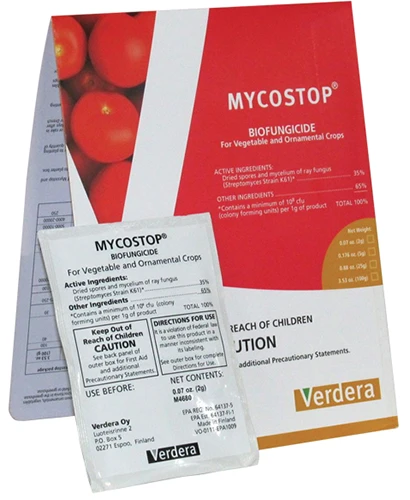
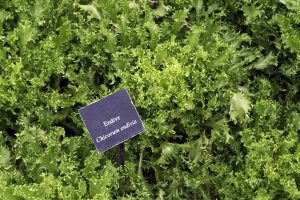
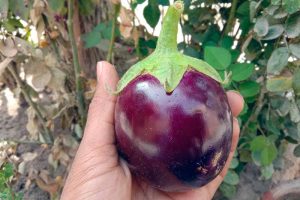

Thanks for all the information. I have 10 setting on now at end of July and can’t wait to eat them later.
I accidentally “harvested” my delicata
before it was full grown, about 4 inches and light green stripes. Is it edible? I know zucchini can be eaten when young, so hoping delicata can as well.
Yes, you can eat underripe ‘Delicata.’ I like to remove the seeds bake mine with some water to create steam and soften them up. Then I’ll grill or roast them to carmelize them a bit.
Thank you so much!